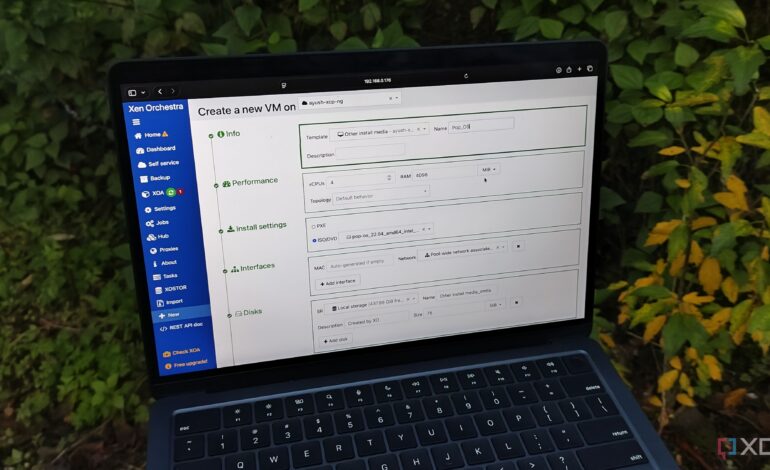User Experiments with XCP-ng, Prefers Proxmox for Home Lab

A user who switched from Proxmox to XCP-ng for their home lab has expressed a preference for returning to Proxmox after testing XCP-ng. While both platforms are popular among enthusiasts, this individual’s experience highlights the strengths and weaknesses of XCP-ng in comparison to Proxmox, particularly regarding features and community support.
Proxmox, a widely-used virtualization platform, remains a favorite for home lab enthusiasts. Despite the reinstatement of the free version of ESXi earlier this year, alternatives such as TrueNAS and Unraid are also viable options. However, the user decided to explore XCP-ng, a competitor powered by the Xen hypervisor, to see if it could meet the needs of a typical home lab setup. After completing the experiment, they concluded that they would likely revert to Proxmox.
For this experiment, the individual utilized a home server rig consisting of an AMD Ryzen 5 1600, 16GB of memory, and a GTX 1080. This setup was chosen to facilitate a fair comparison against their existing Proxmox cluster. The installation process for XCP-ng involved creating a bootable drive and navigating an old-school, menu-based interface to set up the system.
After selecting a 128GB SSD as the boot drive and configuring some basic settings, the user accessed the management interface, XO Lite, using the server’s IP address. They noted that while XO Lite provides basic management capabilities, it lacks the comprehensive functionality found in other platforms. As a result, they needed to deploy the Xen Orchestra Appliance (XOA), which requires more resources than typical management interfaces. The need for 2 v-cores and 2GB of RAM for XOA can be a significant drawback for users with limited hardware.
Despite these challenges, the performance of XCP-ng was generally impressive. The user reported that the Xen hypervisor is still viable, contrary to claims of it being outdated. They found that XCP-ng effectively supported Windows 11 virtual machines, thanks to built-in TPM 2.0 and secure boot emulation. The installation of Citrix drivers enabled smooth operation of the Windows environment, provided adequate resources were allocated.
Linux-based virtual machines were easier to set up, and enhancements in XCP-ng version 8.3 streamlined the process of adding external devices. However, the platform’s lack of native support for containerization posed a limitation. While XCP-ng does support Kubernetes through Hub Recipe, the implementation is not as straightforward as using lightweight containers directly on the host.
The user expressed frustration over essential features, such as backups and automation tasks, being locked behind a paywall in XOA. They noted that while it is possible to use Xen Orchestra as an alternative management solution without these restrictions, the process of compiling it from source can be cumbersome compared to the straightforward deployment available with Proxmox.
Ultimately, the user concluded that despite the strengths of XCP-ng, such as its performance and the clean interface of XOA, Proxmox remains their preferred choice for home lab management. They appreciated Proxmox’s comprehensive feature set and community support, which are critical for their personal projects. The user plans to continue experimenting with XCP-ng on a different system but will maintain Proxmox as their primary platform for home server tasks moving forward.






